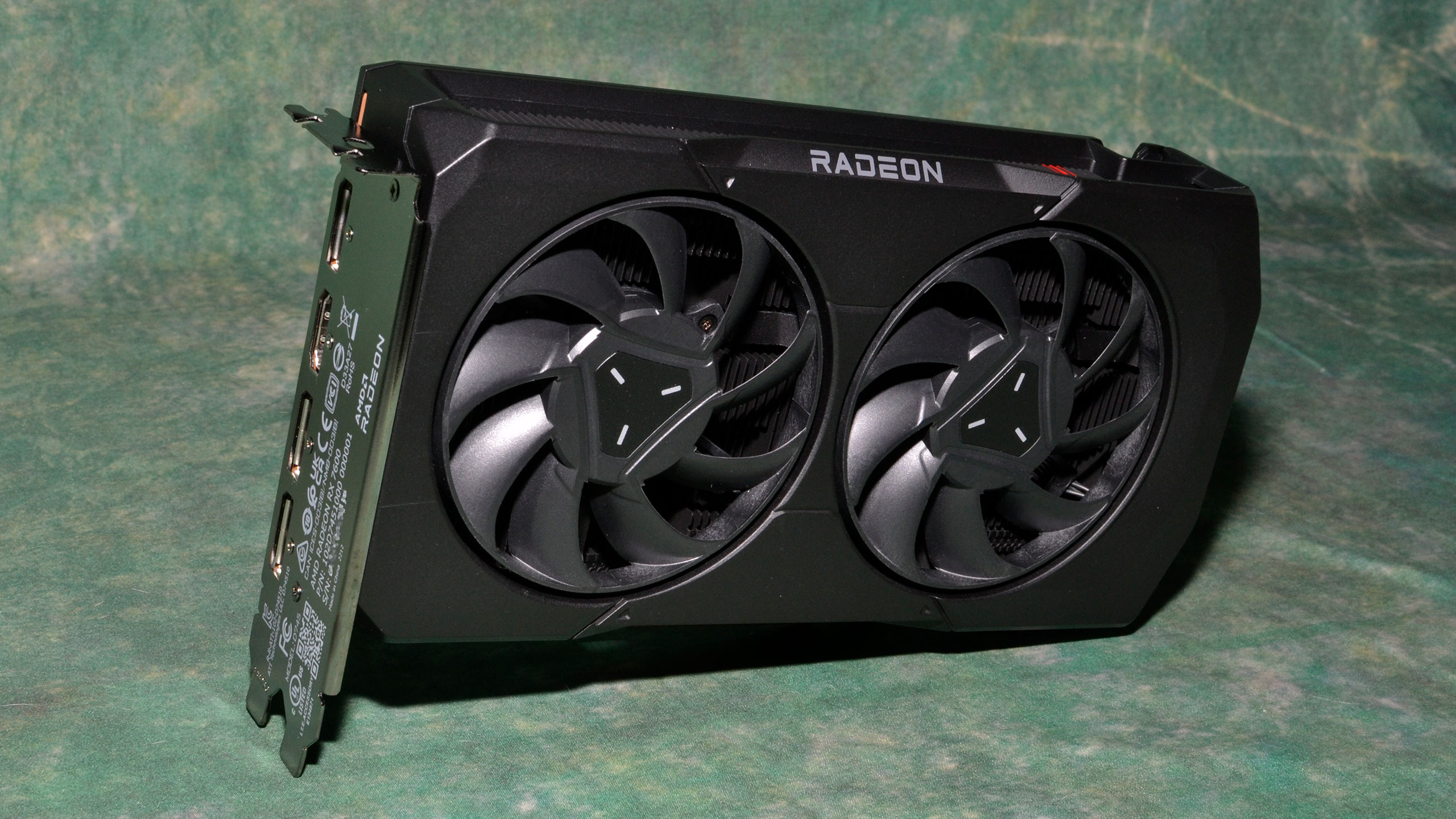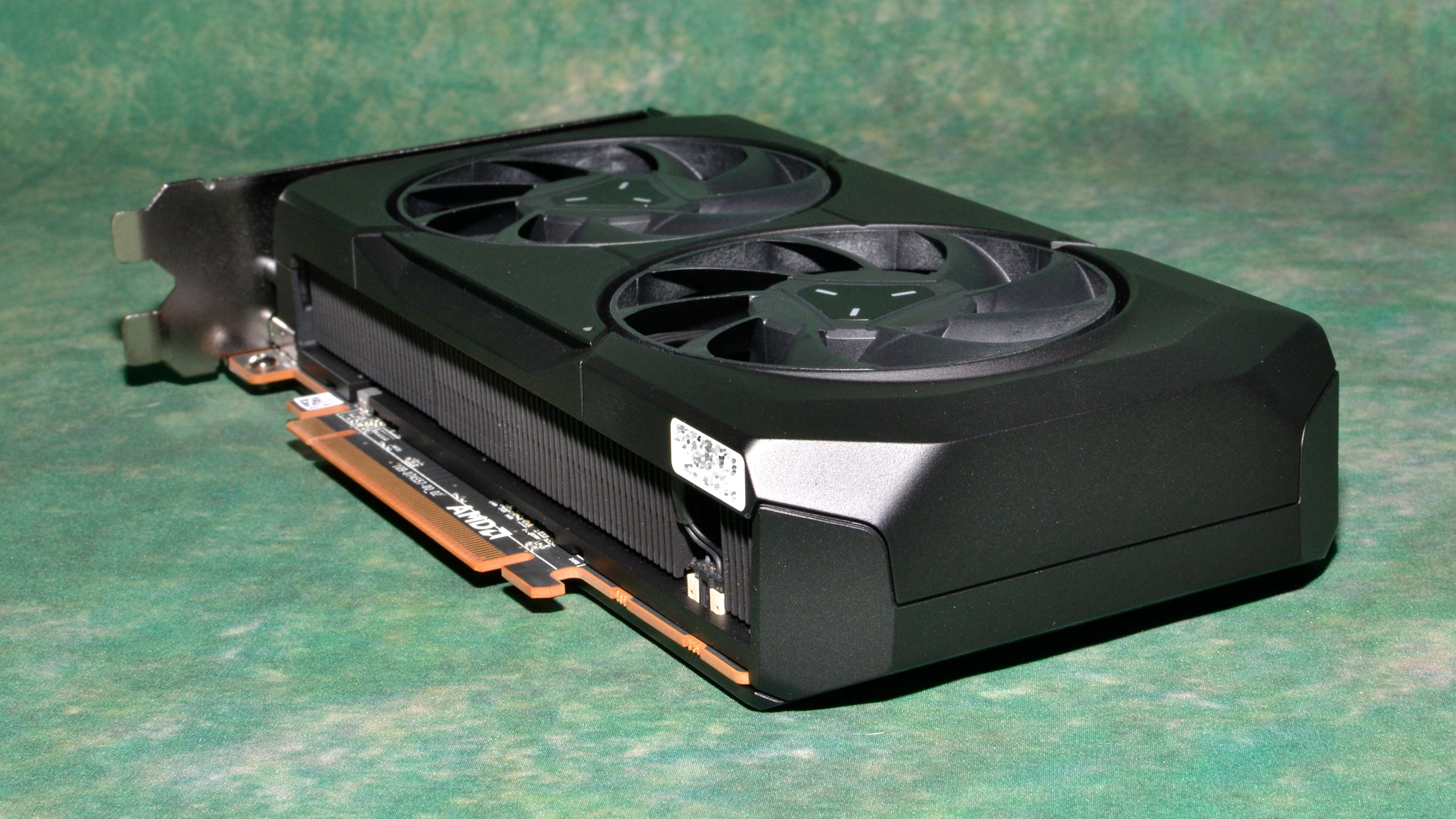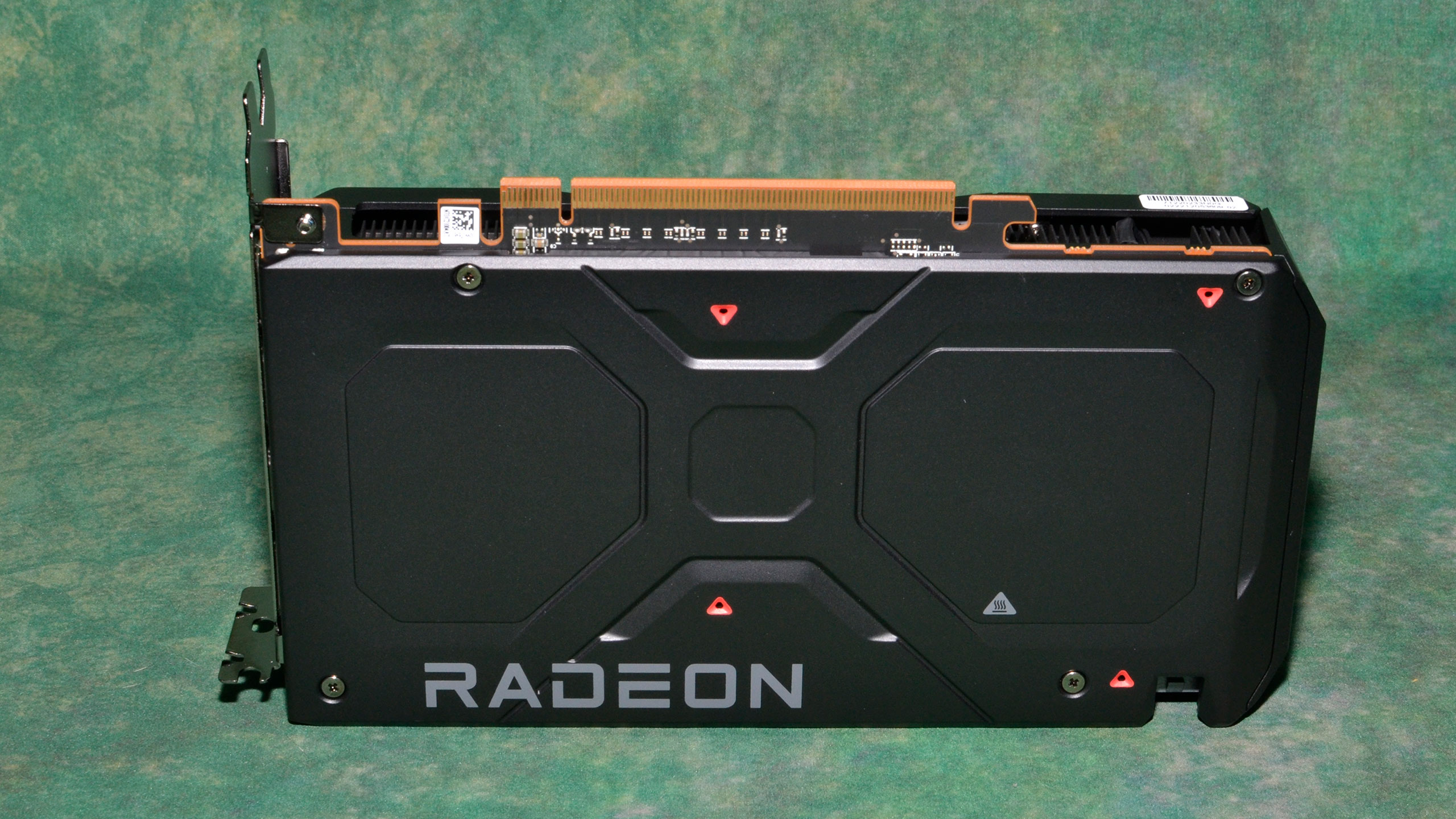Why you can trust Tom's Hardware
Yesterday, we had the Nvidia RTX 4060 Ti review. Today, AMD joins the party with a lower-priced Radeon RX 7600 offering. Neither one is particularly exciting, as we've already seen what the new architectures from AMD and Nvidia bring to the high-end and extreme segments. Pricing for both the AMD RX 7600 and the RTX 4060 Ti isn't awesome either, though at least AMD drops below the $300 mark.
We end up with a similar perspective on both of the new graphics cards. They're okay, and we're glad to have new options, but they're not must-have cards. Given a choice between one of the new RX 7600 or RTX 4060 Ti cards and an existing card with similar performance for the same price, getting the latest generation card makes more sense. However, things get a lot murkier if pricing starts to favor the older cards, and unfortunately, that's what we're likely to see.
If AMD only had Nvidia as competition, the RX 7600 would probably look pretty good. Ray tracing performance won't brighten your day, but rasterization performance beats Nvidia's RTX 3060, and you can save $40 at the same time. The problem is that AMD also has to compete with itself, meaning the previous generation RX 6000-series cards.
When you see the $269 RX 7600 barely beating the $239 RX 6650 XT and trailing the $269 RX 6700 10GB, you have to decide what it is that you really want. DisplayPort 2.1 is basically a checkbox feature, especially on the RX 7600 — because who will hook up a DP2.1 display to such a modest card? AV1 support is fine, but are you actually going to use it? Maybe if you're a streamer, but otherwise, you could use HEVC encoding and get roughly the same quality and compressions ratio. For gaming purposes, getting a bit more VRAM and performance would make more sense.
Let's also point out that the Radeon RX 7600 is, as far as we're aware, the "full-fat" implementation of AMD's Navi 33 GPU. There's not going to be a faster RX 7600 XT using the same chip. The previous generation RX 6600 XT and 6650 XT were also fully enabled variants of the Navi 23 GPU. Why did AMD drop the XT suffix from the RX 7600? If we were to venture a guess, it was so that AMD could compare performance with the RX 6600 and claim a bigger generational improvement.
What we can't say for certain is where the RX 7600 pricing will end up. AMD still hasn't officially changed the MSRP for its RX 6600-series GPUs, but street pricing has dropped by over $100. While the RX 6600 had a $329 launch MSRP, prices back in mid-2021 were all kinds of messed up, so that reasoning doesn't really hold much sway now that Ethereum mining is dead and buried.
Could the RX 7600 end up selling at closer vanilla RX 6600 prices? Possibly, but it will likely stay pretty close to the official MSRP for a while. We'd instead expect AMD to release a lesser card, like an RX 7500 XT, that uses a trimmed down Navi 33 GPU with a $199 MSRP. That would be a massive upgrade relative to the 6500 XT, but then the same issues apply: Call it an RX 7500 XT, but a trimmed down Navi 33 GPU would actually be an RX 6600 replacement.
In a couple of months, we'll also get Nvidia's RTX 4060 as a $299 card. If AMD is going to drop the price on the RX 7600, just before the RTX 4060 debut would be the time to do so. Either way, you still get an 8GB / 128-bit interface graphics card. That's not a deal-breaker if you're only running a 1080p monitor, but it does mean any card bought for 1080p could end up feeling very inadequate if you happen to upgrade your display. You'll probably also need to drop texture quality a notch in some games, even if you're only running at 1080p.
Plenty of people have been hating on Nvidia's RTX 40-series, especially the pricing aspect. Some say the new RTX 4060 Ti is a terrible and overpriced card. But here's the thing: It's over 30% faster than the RX 7600 in rasterization games, and roughly twice as fast in demanding ray tracing games — and that's without including DLSS upscaling or frame generation. So it's fair to say it's about 50% faster than AMD's RX 7600 for a bit less than 50% more money, and it even uses less electricity.
We're not saying people should forget about the RX 7600 and jump up to the $400 RTX 4060 Ti. We're just pointing out that their value propositions (FPS per dollar) aren't all that different. That's a big part of why we ultimately landed at the same 3.5-star rating. These two new cards are okay — not amazing, but just okay. If you're in the market for a new sub-$300 card, the RX 7600 is a decent option. However, for $400, the RTX 4060 Ti does offer some tangible benefits like DLSS 3 support.
But if you already have a graphics card that does what you need it to do, just stick with that and wait out the current series of new GPUs. Alternatively, the Radeon RX 6600 is still an excellent deal at $199, and the same goes for the Intel Arc A750. You'll probably have fewer driver concerns with AMD's GPUs, though.
The AMD Radeon RX 7600 will go on sale tomorrow, May 25. We expect the usual gamut of custom overclocked AIB cards as well as branded variations of the reference design. Reference models should start at $269, while factory overclocked cards with lots of RGB lighting will probably push prices north of $299. Now all we need is for AMD to launch its RX 7700- and 7800-series parts.
- MORE: Best Graphics Cards
- MORE: GPU Benchmarks and Hierarchy
- MORE: All Graphics Content
Get Tom's Hardware's best news and in-depth reviews, straight to your inbox.
Current page: Radeon RX 7600: Mainstream RDNA 3
Prev Page Radeon RX 7600: Power, Clocks, Temps, and Noise
Jarred Walton is a senior editor at Tom's Hardware focusing on everything GPU. He has been working as a tech journalist since 2004, writing for AnandTech, Maximum PC, and PC Gamer. From the first S3 Virge '3D decelerators' to today's GPUs, Jarred keeps up with all the latest graphics trends and is the one to ask about game performance.
-
Amdlova As what I expected another pile of crap. One watt better than the old gen. Why spend sand on these... 199 dollar max for this graphics.Reply
@JarredWaltonGPU thanks for the review... hard time to you trying find somenthing good or new on these graphics -
salgado18 AMD should have made a refresh of the RX 6650 XT and earn more money. If nothing really improved, then what's the point?Reply -
btmedic04 Glad to see the last minute price drop, it definitely makes it a much more appealing product. Currently at newegg there are 5 rx 6650xt models available with an average price of $288 minus an average discount of $20. So more or less the same price as the rx 7600 mba. given that information, if I were in the market at that price range, I'd just grab the 7600 given they are more or less the same price once you factor in discounts. It still would've been nice to see a -600 class part match the last generation -700 class part in performance. Maybe we'll see that with a 7600 xtReply -
InvalidError Reply
While it may not make sense for people who already own something from the last generation or two, plenty of people have 5+ years old GPUs or are building new with no half-decent GPU to spare.Amdlova said:As what I expected another pile of crap. One watt better than the old gen. Why spend sand on these... 199 dollar max for this graphics.
I'm still using a GTX1050, waiting for something decent to hit ~$260 CAN. I bought an open-box A750 for $270 a few weeks ago, ended up returning it as seemingly defective since it caused my PC to crash repeatedly. -
Elusive Ruse Reply
People want a brilliant GPU and they wanna pay $250 for it, as if the whole pandemic, parts shortage and a historic inflation went over their head. This might sound like a radical idea, but mid-range starts at $500 now. :LOL:InvalidError said:While it may not make sense for people who already own something from the last generation or two, plenty of people have 5+ years old GPUs or are building new with no half-decent GPU to spare.
I'm still using a GTX1050, waiting for something decent to hit ~$260 CAN. I bought an open-box A750 for $270 a few weeks ago, ended up returning it as seemingly defective since it caused my PC to crash repeatedly. -
atomicWAR Reply
Should it though?Elusive Ruse said:This might sound like a radical idea, but mid-range starts at $500 now. :LOL:


